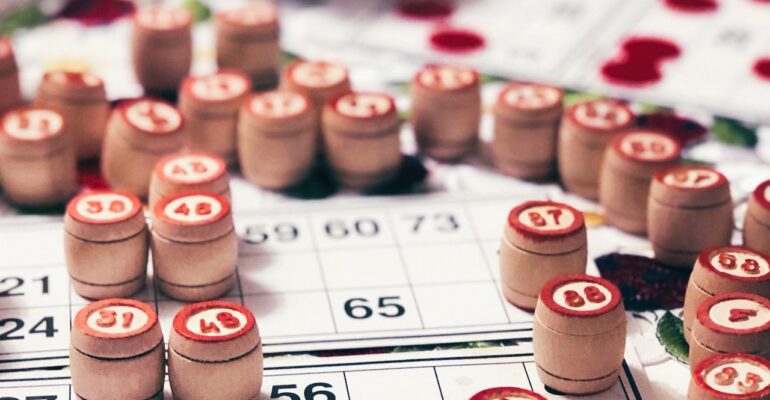Storify your Diwali gatherings with this game
When you’re reading this, I’ll be on vacation in the lovely hill state of Sikkim! So this edition will be a short one.
But it does pack a punch. I have a suggestion that can dramatically improve your family/friends gathering this Diwali.
So, what happens when we meet friends and family during Diwali? Card games. Food. Catch-up conversations. More food. Gossip. Sweets.
All good. But here’s a brilliant game that you can use to transform your get-togethers. It’s simple and fun to organise. It gets everyone involved from the youngest to the oldest. And what’s more, you get to know your near and dear ones even better.
I call it the ‘Story Housie’ game.
The Story Housie Game
No no, it’s not something I invented.
It was suggested to me by a good friend, Priya Agar many years back. And I love the game so much that I’ve played it with all my close family and friend groups.
Here’s the game in three easy steps:
- Gather stories
- Create the Housie cards
- Play
Step 1: Gather Stories
Say you have 10 family members visiting for a get-together. Tell them that you are playing a fun activity for which you need them to share memories and stories about themselves and other family members. Important note: They should share it only with you, not on the family Whatsapp group.
Now what do I mean by a story? Not their life history – no one has the time to listen to one person drone on for hours. By stories I mean funny, memorable incidents from their life, or those of their spouse/immediate family members. Ask them to share interesting incidents – especially from when they were young, especially those that others may not know and especially something that showcases their personality.
To help people trigger their memories, share an example of such an incident from your own life (for e.g. that time when you sang in the confines of your bedroom instead of taking the stage at your dad’s office party).
Alternatives: If people find it difficult to remember stories, here are some additional questions you can ask them to submit answers to:
- A surprising favourite (actress, movie, song, hobby) of the person. For instance that bua who is a K-Pop fan.
- A lesser known fact about the person (e.g. the grandpa who used to be the college heartthrob)
- A trait/idiosyncrasy which is cute and funny (for instance the friend who goes ballistic if someone attempts to eat food when seated on the bed). Be careful to avoid the embarrassing ones in this category.
I’m sure you’re getting the drift here… basically on hearing the story or fact, the audience should gasp, “whoa, I never knew that about this person!”.
Also, the more such stories the better. Tell folks to share as many memories as they can. You may not be able to include all in the game, but they can make for excellent conversation fodder during the party.
And now, we move on to the Housie (a.k.a. Tambola/Bingo) part of the game.
Step 2: Build your Housie board
Just sharing stories would have been an amazing activity by itself. But what takes this game to the ‘Pure Genius’ level is how it combines:
– The surprising revelations, the mock fights over different versions of the same incident and the all-round hearty laughter that accompanies great storytelling; and
– The breathless anticipation and thrill of winning in the game of Housie
My deep respect to the inspired person who came up with this brilliant idea.
To create the Housie cards, you first need to convert all the gathered stories and facts into questions and answers.
This is a bit of an art – and it may take some time for you to figure out. As a guiding document, here is an extract from a Question list I had used for a family gathering once. Here’s a screenshot of that same file:

Once you create your list of questions, all you need to do is copy and paste the answers (only the answers column) into a Housie-card generator website.
I use this one: Bingo Card Generator. (Use the ‘Ink Saver’ theme if you want to keep it simple, else go creative!)
When you do that, it automatically creates Housie cards with various combinations of the answers. The cards can be arranged in 3×3 grids if there are a lot of players. For a smaller group, you could do 4×4 cards. The total number of questions should ideally be 2X the number of slots in each card. So if you go with the 3×3 card, each person gets 9 answers… which means you should have at least 18-20 questions (more is good!).
Step 3: Play!
On the day of the get-together:
– Print your cards on separate sheets of paper (I usually print 2 cards per page and cut them). Keep some extra cards just in case.
– Create chits with just the question-numbers on them and place the chits in a bowl. You can ask the younger participants to pick one chit at a time. When they pick a chit and read out the number, ask the corresponding question.
– Appoint one person as the Story Master. This person would read out the questions and let people answer. If there are people who already know the answer, exclude them from answering!
– Once people know the answer then all those who have it in their Housie card will mark it with a pencil. You can of course keep asking for any Quick-5s, Four-Corners or Full-houses.
– Once people have marked their Housie cards for a particular question, don’t move on to the next question yet. Ask the person who was the subject of the previous question to share more details of their story. For instance, say it was Q.8 from the list above. I would then ask the person: What exactly were they thinking when they decided to stop and get their shoes polished even as they were getting awfully late for their train to Delhi? (I neither confirm nor deny it was me).
– Linger on the stories – it would trigger memories of others in the group of that person. This is the best way for youngsters to get to know their elders.
– Play till you are done with all the questions
– Keep some nice prizes for the winners (I always forget this!)
A few caveats before we conclude
– Be cognizant of others’ feelings. What might be funny to one person might be deeply embarrassing to another. The fun shouldn’t be at the expense of hurting someone.
– Use a polite and tactful hand to prevent the garrulous types from monopolising the conversation.
Storify your gathering
A couple of months back, I had written a post called “Celebrate memories as stories“, which resonated with a lot of you.
Often, even if we want to share good memories and stories, we don’t find the time or occasion to do so. Or even when we find the time, we struggle to figure out a way to actually make it happen.
Let this Diwali be that occasion. And let ‘Story Housie’ be the vehicle to share your stories.
Here’s to some ‘storified’ fun this festive season.
Happy Diwali to all of you!
Photo by Tatiana Аzatskaya from Pexels







